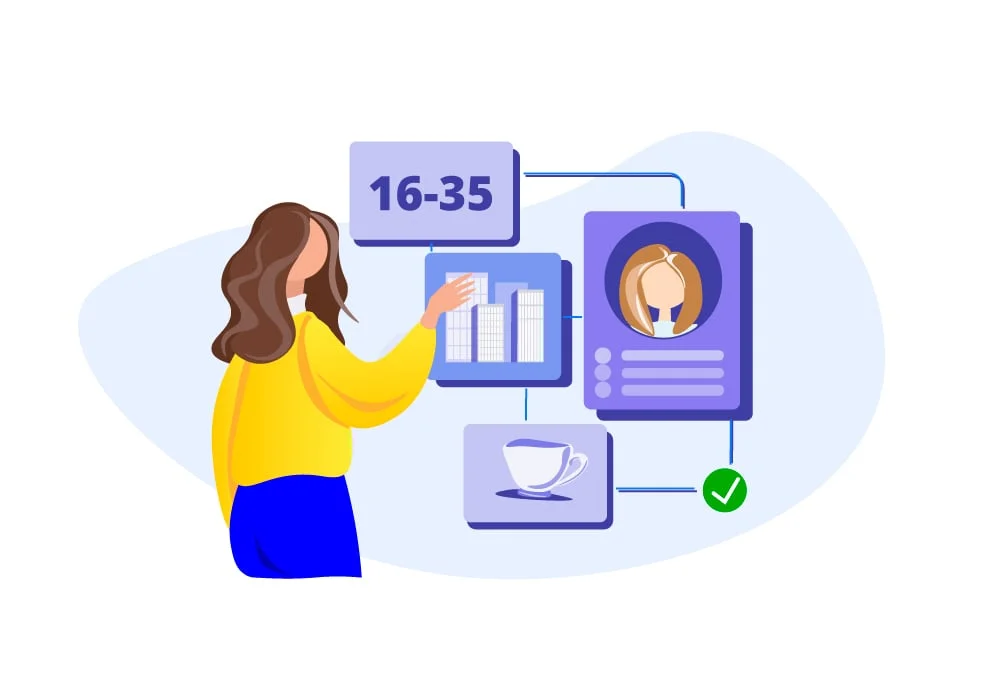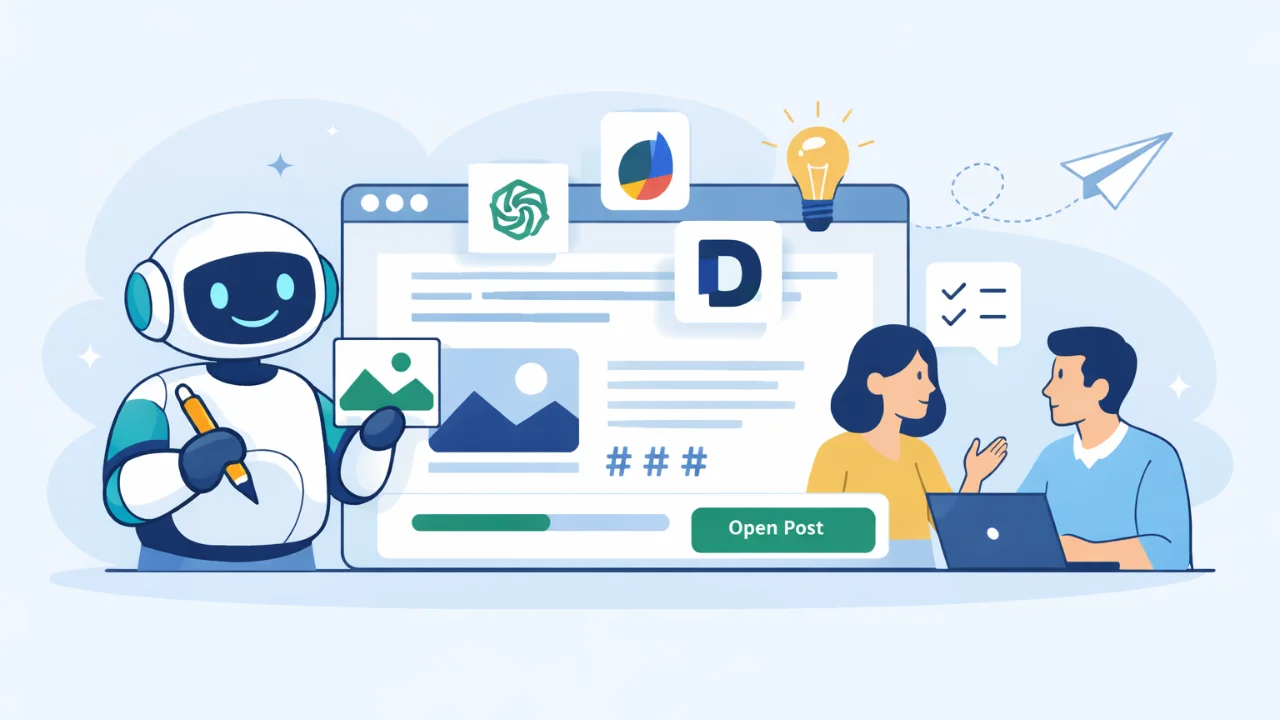In this article, let’s talk about Facebook and Instagram algorithms.
The main directions of ads targeting
There are two main visions of targeting and interest setting up in targeted ads on Facebook and Instagram that are the most often used by different targetologists.
- Some targetologists believe that Facebook algorithms will manage on their own. It is enough just to give them a little direction and specify the key interests of the user. Smart Facebook algorithms will do their job by setting up the ad so that it is shown to the audience that you need.
- Another vision is the exact opposite. Here, most often you will be thought to make a selection of interests: choose the main ones, then the additional ones, which supposedly tell us about the paying capacity of the audience, for example, what cars they drive, what phones they have, whether they travel or not. Then comes the third block of interests, indirect or related to the social aspects of life. That is a totally different direction — we list a lot of interests and limit Facebook algorithms.
How to set up targeting in your particular case is up to you to decide. Test both options, see how they work in your case — only this can bring you good results.
Targeting setting
We will be working in the settings with the audience block - this is the main block where the magic of Facebook happens.
- Suppose your customer is a coffee shop located in Denver. The first thing we need is to choose the city of Denver. We select those who live there. For now, we will tune advertising for residents. For now, we will tune advertising for local residents. If we want to make it for those who come, we can choose travellers.

- We need to choose an age range. A coffee shop has mostly a youth audience, so let’s take a range from 16 to 35 years old. You can experiment with different ages; the main thing is to segment them.

- You need to differentiate your ads by gender. For now, we choose only women — let’s focus on them. Let’s say there are about 220,000 girls aged 16-35 in Denver. It is quite a large number, and we need a large advertising budget. Let’s try to play with interests to filter the audience.
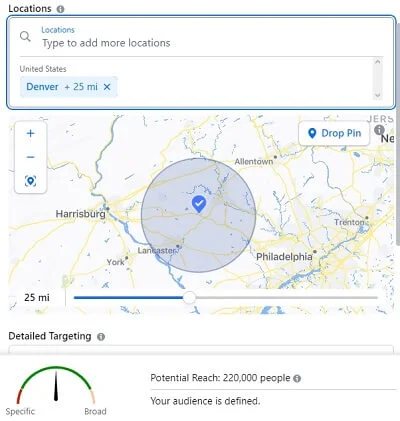
Filtering interests. Let’s try to find those who love coffee. Then there is a great thing — Suggestions. We click on the Suggestions, and Facebook itself shows us the interests. For example, “coffee shops, cappuccino, latte, regular, espresso” — add all this and add restaurants and tea as well, because people love not only coffee but also tea.
We’ve added core interests, and the audience shrank to 70,000. We can already launch this advertising.
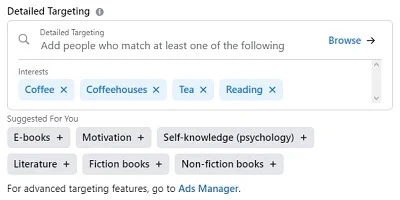
There is another way. For example, we want the same user to have multiple interests. How to do it? We need a setting to narrow the audience. We remove restaurants, coffee shops — we keep additional interests with drinks: tea, coffee.
Let’s add some more tea- and coffee-related interests here: for example, green tea, herbal tea, ice tea, iced coffee. Let’s find more people who love coffee shops and restaurants. Click “Narrow the audience,” type “coffee shops” in here. Then we click on suggestions — there are restaurants, food and restaurants, fast food restaurants, we can also choose fast food and bars. We have made two segments of interest. For example, we have people who love regular coffee, but at the same time, the user must be interested in at least one of the items on the second list, for example, restaurants, fast food, or bars. Thus, 29,000 people like both what is on the first list and what is on the second. So, we narrow down the audience.
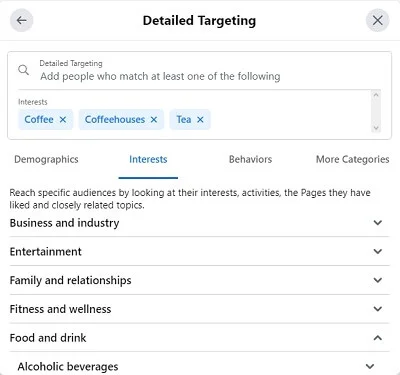
- We can further cut the audience. For example, there is an interest: luxury cars. We select this interest and see that the audience narrowed even more. There are only 9000 people in Denver, girls from 16 to 35 who love tea and coffee, coffee shops, bars and restaurants, plus show interest in business class cars. In this way, interests can be narrowed more and more.
Which approach to use — the first or the second — it’s up to you: feel free to experiment and check how it works on your own. It affects both reach and price. The more segmentation of interests you have and the narrower the audience is, the more expensive it will be. That will be reflected in the cost of ad impressions, respectively, and the cost per click. However, it can work the other way round: you will define a narrow audience, impressions will be expensive, but the click-through rate will be incredibly high. You will customize your ad so well, and it will be so perfectly suited to this segment of the target audience that it will have a very high conversion.
The secret of configuring target ads
How do you make your ads perform well and be cheap and effective? The secret is not in technical configuring but in the approach to advertising making, writing text, and selecting pictures and videos. When we design the profile and ads, when we work with objections, we use the fears or desires of the audience — we gather the information that shall be used for preparing creative things, texts, setting up interests.
